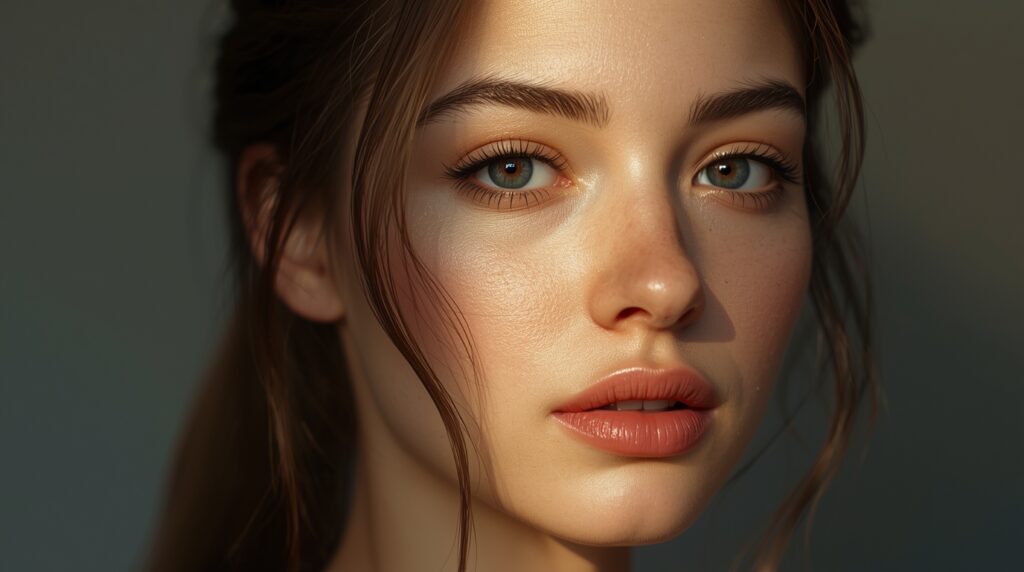Introduction
There’s something magical about seeing a face that never existed come to life on a screen. The light in the eyes, the texture of the skin, the subtle tilt of a smile all created from nothing but words and algorithms. When I first stumbled upon mawshot palmon ai, I didn’t expect it to feel this real. It wasn’t just another AI generator spitting out digital sketches; it was like watching an artist breathe life into pixels.
If you’ve ever wanted to turn your imagination into lifelike portraits people that look straight out of a high-end photo shoot then you’ll want to know how this tool works. Let’s walk through it step by step, just like I did the first time I used it.
What Exactly Is Mawshot Palmon AI?
Before diving into the process, let’s clear something up. Mawshot Palmon AI isn’t a random buzzword tool floating around in tech forums it’s a portrait-generation model designed to create hyper-realistic faces using AI diffusion technology. Think of it like a mix between Stable Diffusion and Midjourney, but with a sharper focus on realism, symmetry, and skin detail.
This AI doesn’t just “draw” it interprets prompts to understand emotion, light, and texture. That’s why results often look like photographs rather than stylized art.
If you’re into visual creativity, you’ll notice how it builds upon open-source backbones like Stable Diffusion’s architecture. That means it’s flexible, customizable, and constantly evolving through community input.
Getting Started with Mawshot Palmon AI
Let’s keep it simple. You don’t need to be a coder or tech genius to use mawshot palmon ai. Most people start by visiting the project’s public demo (you can often find versions on Hugging Face Spaces or through GitHub forks).
Once you’re in, you’ll usually see a clean interface an input box for text prompts, a few sliders for resolution and style, and a big “Generate” button. That’s your playground.
Here’s a quick setup path that worked for me:
- Choose your model: Some versions of mawshot palmon ai come with model checkpoints trained for different aesthetics (cinematic, portrait, soft light, etc.).
- Pick your input type: You can start from a plain text prompt, or upload a reference photo if you want to guide the AI’s structure.
- Adjust your parameters: Resolution, CFG scale (which controls prompt adherence), and sampling steps.
- Hit Generate — Then wait a few seconds for the magic to unfold.
Crafting the Perfect Prompt
This is where most people either get mind-blowing results or total chaos. The way you talk to mawshot palmon ai matters.
A weak prompt like “portrait of a woman” might give you something decent, but not breathtaking. You’ve got to add personality. For example:
“Close-up portrait of a 28-year-old woman with freckles and soft studio lighting, realistic skin texture, shallow depth of field, Canon EOS R5 photo style.”
The AI thrives on detail. Think of it as your digital photographer — it needs a creative brief. When I first started, I made the mistake of stacking too many style words like ultra-realistic, hyper-detailed, award-winning photo all in one go. It overwhelmed the AI. So keep it descriptive but balanced.
If you want to learn prompt crafting in depth, check out the community-driven PromptHero gallery — it’s full of real examples that show what kind of wording produces the best portraits.
Fine-Tuning for Realism
After generating your first few portraits, you’ll notice some images look slightly “AI-ish.” Maybe the eyes are too sharp, or the background feels off. Don’t worry that’s where fine-tuning comes in.
Inside mawshot palmon ai, you can tweak:
- Sampling Steps: More steps = finer detail (try between 25–50).
- CFG Scale: Controls how closely the AI sticks to your prompt (7–10 is a good sweet spot).
- Seed Values: For reproducible results — great if you want to iterate on one look.
And here’s a human tip: lighting changes everything. Adding small lighting cues in your prompt — like “golden hour sunlight” or “soft indoor light from a left window” — can completely shift realism.
I once generated a portrait that looked dull until I added “reflected light from a nearby brick wall”. Suddenly, the image popped to life. The color reflections looked natural, like a real photo shoot.
Editing and Post-Processing
Even after getting a near-perfect output, a little human touch can elevate it. I often take my mawshot palmon ai portraits into tools like Adobe Lightroom or the free version of Photopea (photopea.com) for small tweaks contrast, warmth, or noise correction.
Here’s what works best:
- Slightly boost clarity and dehaze.
- Fix any asymmetry using the liquify tool.
- Add a soft vignette for focus.
If you’re using it for professional projects (like concept art or profile imagery), run it through Topaz Gigapixel AI for upscaling. It keeps the realism intact, even at poster size.
Common Mistakes People Make
Let’s be honest it’s not always sunshine and perfect portraits. When I first started experimenting, I ended up with a gallery of what looked like half-human, half-alien selfies.
Here are a few mistakes you’ll want to avoid:
- Overloading your prompt: The AI doesn’t like clutter. Be descriptive but not poetic.
- Ignoring reference balance: If you upload a face and add a conflicting prompt, it’ll confuse the generator.
- Skipping parameters: Default settings don’t always bring out the model’s best potential.
Patience is key. Sometimes you’ll need 4–5 tries before you hit the jackpot.
Why Mawshot Palmon AI Feels So Different
There are plenty of AI portrait tools out there — Midjourney, Leonardo AI, Fotor, and a dozen others. But mawshot palmon ai stands out for one simple reason: it understands faces.
The structure, the lighting balance, the depth of eyes. it’s all handled with an eerie level of accuracy. It feels like the AI has studied thousands of real photographers’ portfolios.
Some users even say it rivals dedicated models like RealisticVision or Anything V5, especially for cinematic realism. And considering it’s built on top of community-driven open models, that’s a pretty big deal.
If you’re curious, you can browse through the CivitAI model page it often features compatible model checkpoints, including ones fine-tuned for mawshot palmon ai.
Responsible and Ethical Use
This part’s important. Just because mawshot palmon ai can generate lifelike faces doesn’t mean every use is fair game. Avoid creating images of real people without consent, especially celebrities or public figures.
AI art ethics are still evolving, but as creators, we can choose responsibility over curiosity. Keep your work original, disclose AI use when necessary, and never misrepresent generated faces as real individuals.
The Future of AI Portraits
We’re witnessing a shift in digital creativity. A few years ago, photorealism from text was a dream. Now, with mawshot palmon ai, it’s something anyone can do from a browser tab.
Soon, we’ll see more features — like micro-expression control or emotional realism (imagine typing “nervous smile before a first date” and getting that exact look). The possibilities are endless.
And the best part? Every update makes the AI more human not in a creepy way, but in how it captures emotion.
Conclusion
The first time I used mawshot palmon ai, I didn’t expect it to be addictive. But once you see that level of detail and realism, you start to imagine all the ways it can be used digital art, storytelling, branding, or just personal creativity.
It’s not just an AI generator; it’s a collaborator. A digital brush that listens.
If you’ve been curious about trying AI portraits, give mawshot palmon ai a chance. Play with prompts, adjust lighting, experiment, and most importantly have fun with it. That’s where the real artistry begins.

